Impressions, insights and lessons learned by faculty during spring’s historic shift to remote teaching.
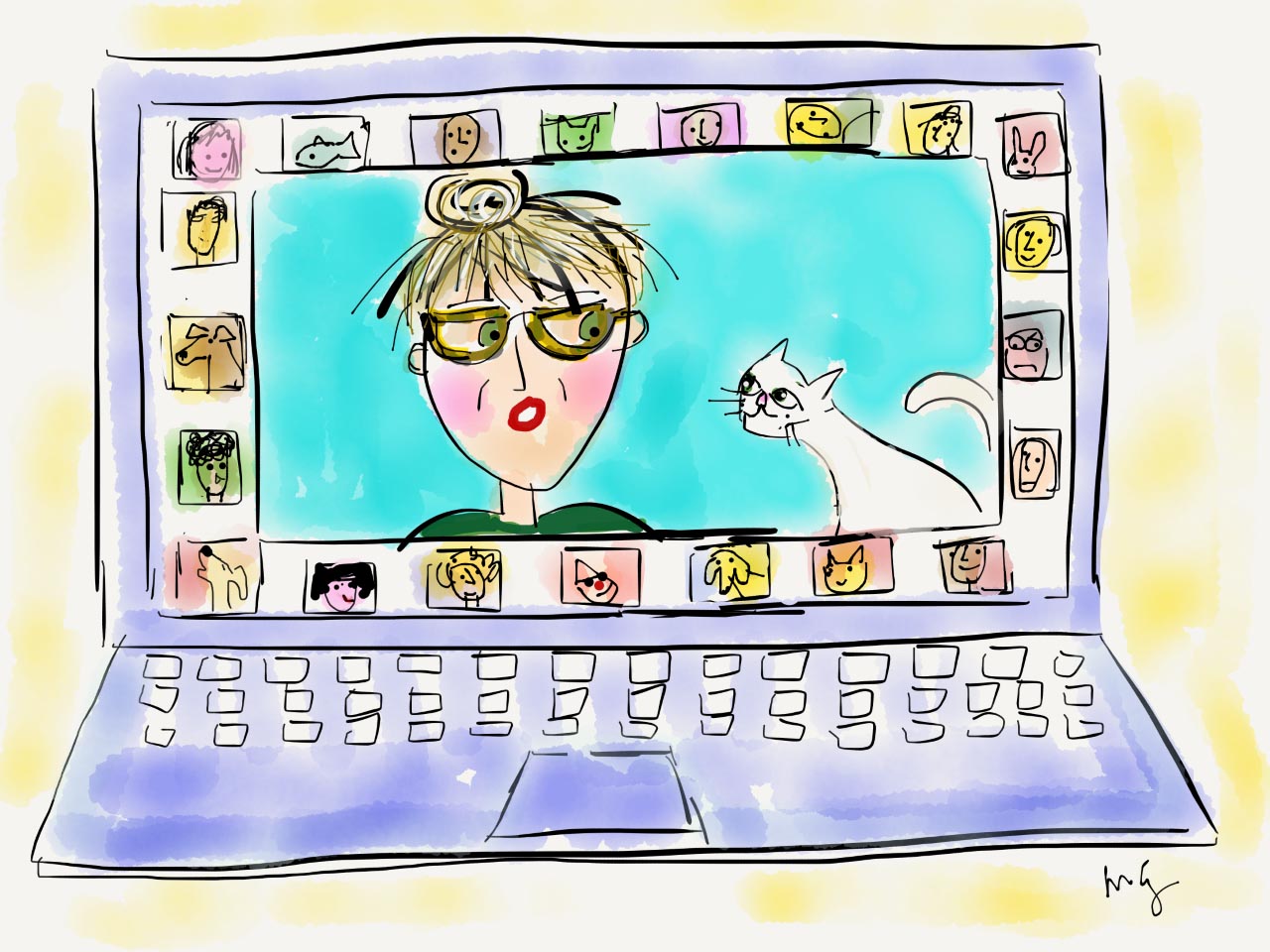
Marianne Gingher
English and comparative literature
There we were, squirmy little postage-stamp people on Zoom, delighted to see one another. Some late risers were still gobbling cereal. A few were in the midst of packing boxes for moves their families were undertaking. One appeared to be wearing a smoking jacket and lounging against pillows. One was swinging outdoors in a hammock. Cats and dogs wandered from time to time into the frames. A sibling was told to hush. A door slammed.
The snoop in me loved viewing their individual habitats. I wish I’d asked each member of the class to host a grand tour of their living space, but we’d already lost a week of precious class time and some might view the assignment as frivolous. No detail is frivolous to fiction writers, however. The material world in all its quirky messiness fascinates. As fiction writers, students are encouraged to be curious about what makes humans tick. Surroundings make humans tick, and much of who we are derives from where we dwell and with whom. Most were at home in the fishbowl of family. They’d given up their independence. They were struggling to be kids again with parents calling the shots. They missed their friends. They missed the free-wheeling person they’d become in college. They could still be a tiny version of that person in our Zoom classes.
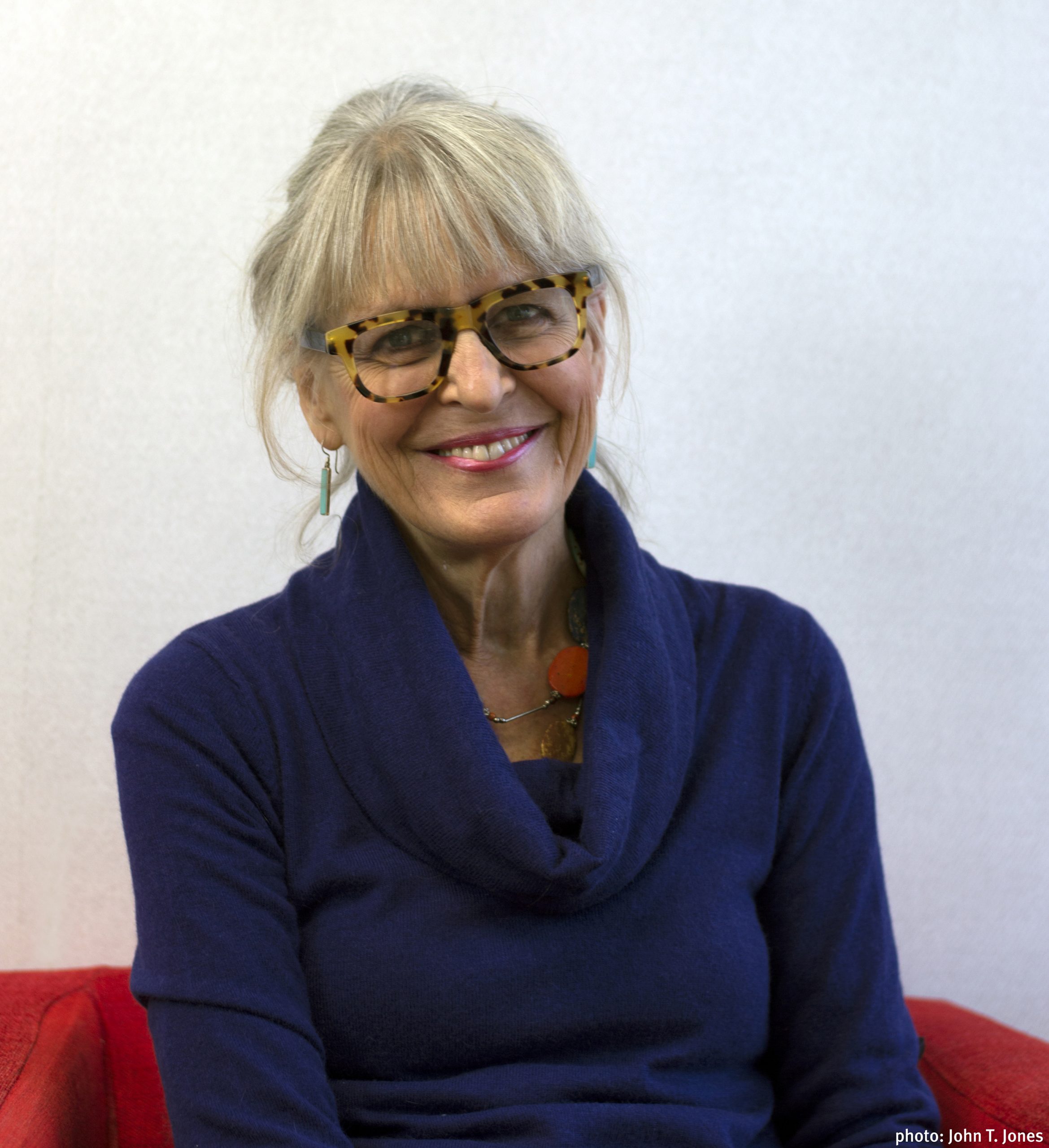
I was surprised by their devotion to our Zoom time. Out of 33 students in my two fiction-writing classes, only two students tended to regularly disappear.
At the beginning of the transition to remote teaching, I felt dreary. I’m afflicted with technophobia: I like editing paper manuscripts; I read books, page by fragrant page, not illuminated on the antiseptic Kindle. My MacBook Pro is nine years old, and I thought it would explode with so much Zoom use. But lo and behold, there I was Zooming away, editing my students’ stories online, downloading links to send them so they could watch authors we’d studied during the semester read from their work. Truthfully, it was exhausting. But there was something gratifying about it, too. Maybe simply the fact that we could do it. That we all adapted to a far-from-ideal situation but with Rosie-the-Riveter spirit. Our sense of purposeful unity felt empowering.
The salvation for everyone was that we could still meet face-to-face and enjoy real-time conversations about literature. Our creative writing classes are small, tight-knit communities. We talk about feelings. We talk about human struggle and try to thread our way through it on the page, word by word, in what we read and write. What I think we all learned was how resilient we could be when it came to staying the course — as long as we were visually and sonically together.
A friend sent me this quote from Toni Morrison in an email, and it pretty much sums up my feelings about my classes: “There is no time for despair, no place for self-pity, no need for silence, no room for fear. We speak, we write, we do language. That is how civilizations heal.”
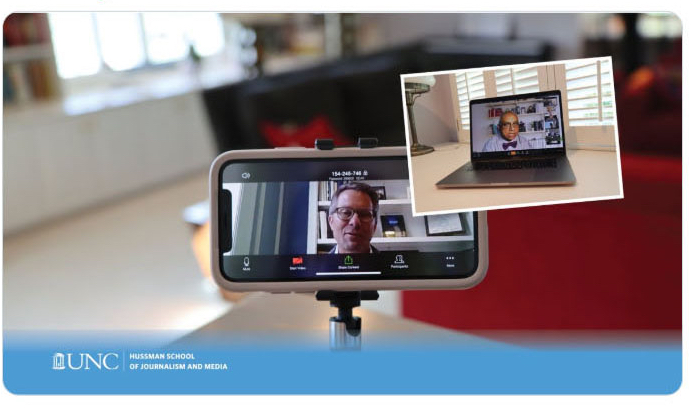
Deb Aikat
Hussman School of Journalism and Media
In his 1922 poem, “The Waste Land,” T. S. Eliot had it wrong when he mused: “April is the cruelest month.” For me, March 2020 disrupted and tested me, as the COVID-19 pandemic unfolded in our communities.
The new normal of social distancing, campus closures and virtual learning sharply disrupted the Hussman School of Journalism and Media’s largest class — MEJO 101: The Media Revolution: From Gutenberg to Zuckerberg and Beyond — with 150 enrolled students. I have co-taught MEJO 101 for seven semesters with Dean Susan King, who conceptualized the course in 2013.
This spring, I co-taught MEJO 101 with Professor Lee Meredith and our talented teaching assistants, Anne McDarris and Lindsey Slack. We worked overtime to prepare for remote teaching.
As the pandemic displaced us from our auditorium classroom in Carroll Hall, we reimagined the power of remote teaching. We collaborated with 12 faculty colleagues to develop a TED-lecture format on Zoom for each class session. We melded the array of faculty lectures with riveting small-group discussions that seamlessly linked one remote teaching session to another. Our students seemed to love every moment of it.
Chancellor Kevin Guskiewicz “visited” our class on April 15 from his desk near the corner window of his South Building office. “I see the Old Well from here,” he said before interacting with 130 students in class that day. After engaging with us for 15 minutes, Guskiewicz left to visit another class as part of his drop-in Zoom tour.
The COVID-19 pandemic pushed us to successfully transform MEJO 101 by addressing many daunting challenges. After four intruders “Zoom-disrupted” our large class, we restricted such sport with password-access. When more than 18 students faced Internet access issues, we identified alternatives. To properly administer tests, we coded online exams. Two students left for China, but we continued to work with them as they engaged in our class from their quarantined hotel room in Beijing. We allayed student concerns about grades by sharing an open grade book.
These innovations were time-consuming. The pandemic has drained our energy but not our enthusiasm or expertise. The lessons we learned from remote teaching MEJO 101 have equipped us to plan for the fall, when we are preparing for a larger enrollment of 300 students. We are developing new ways to deliver an enriching learning experience with ingenious innovations by redefining the “normal” we all were used to before the COVID-19 pandemic.
I have cherished the magnanimity, camaraderie and collective wisdom of the Carolina community. Journalist Charles Kuralt famously signified Carolina as the “University of the People.” Issues such as Silent Sam, race inequities and gender pay gaps may have tested Carolina’s role as the University of the People. Despite such controversies, the Carolina spirit has endured. In a similar vein, the pandemic has challenged our threefold commitment to research, teaching and public service. And, still, we endure.
As we prepare for the post-pandemic phase — yes, we shall overcome — let us focus on three goals: 1) Upholding our commitment to equity and integrity; 2) pursuing excellence, accountability and transparency; and 3) sustaining the Tar Heel spirit and joie de vivre.
As a Carolina faculty member for 25 years, I have experienced the joys, trials and tribulations of academic life at UNC-Chapel Hill and beyond. The COVID-19 pandemic may have disrupted our research projects, teaching modes and public-service work. But these disruptions have rejuvenated my resolve to inspire excellence among Carolina’s dedicated faculty, talented students and loyal alumni.
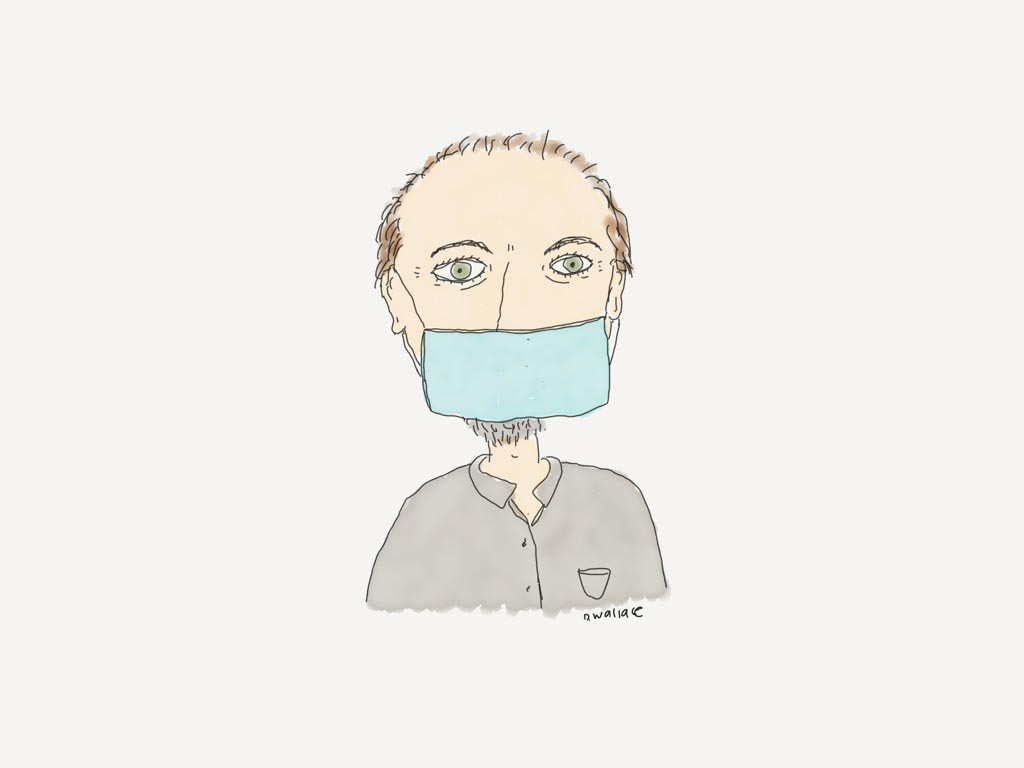
Daniel Wallace
English and comparative literature
In our last class before spring break, a few days before the beginning of the New World, we talked about our plans. This was Senior Honors, a yearlong class in which a select group of writers spends the entire year together writing stories, and by the end of it collect them into a short book — their thesis. One student was going to Copenhagen to see her boyfriend. Two were traveling to Greece to have the time of their lives. Another was lucky enough to be going on … a cruise. But even then we knew that a cruise was not the best idea; we laughed when she told us, and gasped. Later she decided not to go on the cruise at all and spent her spring break in Charlotte instead. Everyone returned home safely, but I never saw any of them again.
Not true. I saw them all twice a week for the rest of the school year and for office hours and sometimes just to chat — on a screen. It was not the same (what is?), but it wasn’t terrible, either. Ideas and creativity exist in a virtual environment just as well as they do in a room with fluorescent lights and tiny windows. And there is something in the nature of writing itself that argues against groups: writers are generally a group of one.
Still, each year in the creative writing program at UNC-Chapel Hill, it happens that a greater life emerges from what amounts to a co-creation of our very selves through the honest and friendly companionship of like-minded pilgrims. In fiction, poetry and non-fiction as well. Had we not already been meeting for months, I really don’t know how it would have gone; a layered depth of shared experience would have been lost, for sure, and there is something about simply taking the time to get dressed and show up somewhere that has an added value attached to it.

Other things: It’s crucial to see what kind of shoes your students wear. See what falls out of their backpacks. Talking with a student before class begins — about next-to-nothing — may be one of the most important conversations you’ll have with her. It’s unnatural not to see someone, in their entirety, just as it’s unnatural to cross the street when you see someone walking toward you. But these are things we have to do until we don’t have to do them anymore.
I think our near future, as teachers and as students, will be a hybrid of past and present. At least I hope it is. I don’t see a return to anything being just what it was, and to yearn for that will breed disappointment and frustration. This will be a difficult creative process — the future always is — but I think our program and the department of English and comparative literature are up to the task. It’s what we do every day.
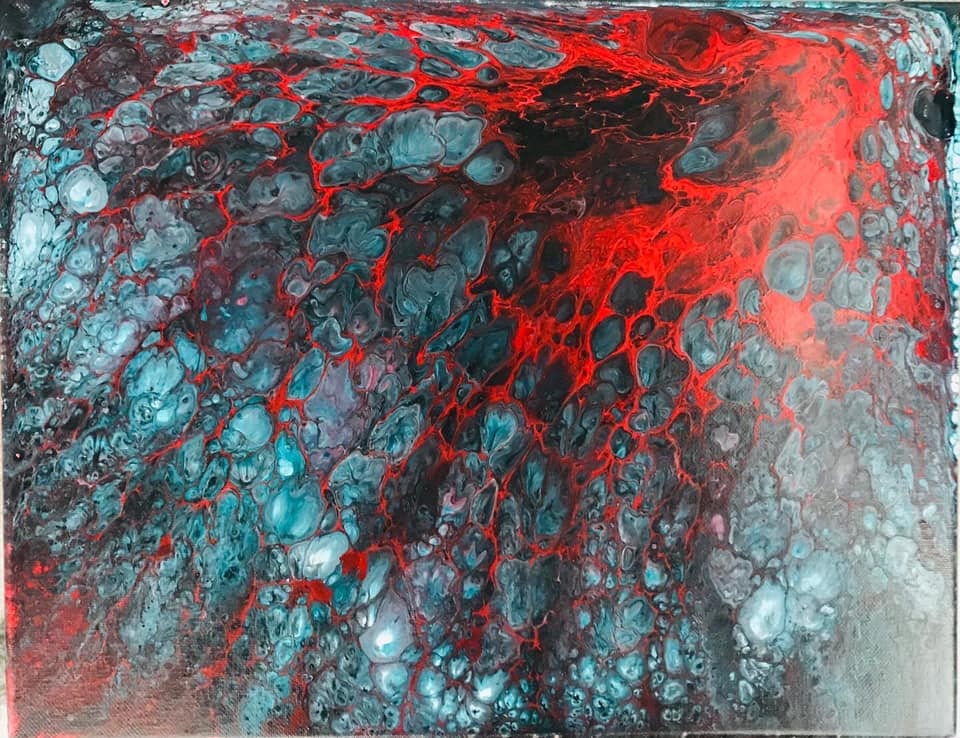
Claudia Yaghoobi
Asian studies
The stay-at-home order that resulted in remote teaching for us has been tough, but I’ve fared it pretty well given that I am an ambivert — a combination of extrovert and introvert. I need alone time to recharge after socializing, so being alone is not foreign to me. During that alone time, I engage many activities, including making art, that help me fill up my energy to be able to socialize again. These activities have sustained me during this self-isolation, too.

I am sure it has been a great challenge for all educators, as it has for me, to transition to remote teaching, since we do feed off of one another’s energy and build interpersonal connections with our students and colleagues. During these difficult times, I have observed how, as humans, we are such interdependent social beings. At the same time, remote teaching has taught me to be resilient and patient. My students and I have come up with plans to help them get through this storm, but it’s been different from previous semesters, since there’s been additional anxiety about the unknown future that we all face.
Despite the uncertainties, I have tried to keep one thing consistent for my students — weekly emails with mapped-out schedules of what they need to accomplish by a certain date and my personal videos showing them what I am doing to stay emotionally, mentally and physically healthy. For example, I have shared videos of my home-office space, my dog and my paintings.
The most difficult part about this new reality for me has been missing out on my students’ accomplishments and successes. I miss celebrating with them. I have a few graduating seniors who got into grad schools and others who received internships. I would have wished for them to have a full celebration for their successes, but under the current circumstances, such in-person celebrations are not possible.
This physical distancing and isolation have made me think and observe more carefully how people, including my students, express their concerns. I want to be there for them. This has led to a research idea for me: to explore the different ways that we experience love and compassion during times such as this one and how this physical distancing is impacting our relationships.
I am adamant not to let it negatively impact my personal relationships. I have been intentional about it, making time for virtual happy hours, phone calls and video chats with friends and family that I had lost contact with. Perhaps this is the silver lining — that we are all in this together. Why not show some love and compassion to one another?
Faculty essays courtesy of The Well
